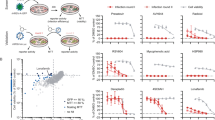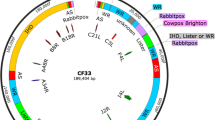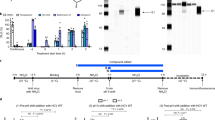Abstract
Virus-directed enzyme prodrug therapy (VDEPT) is an emerging strategy against cancer. Our approach is a P450-based VDEPT that consists of using cyclophosphamide (CPA) as a prodrug and a Cytochrome P450 2B6/NADPH cytochrome P450 reductase fusion protein (CYP2B6/RED) as a prodrug-activating enzyme. Due to the heterogenous expression of proteins in tumor cells, basal reductase activity may not be sufficient to supply CYP2B6 with electrons, the fusion protein should enable the expression of both proteins at high levels in tumor cells. CYP/RED fusion proteins have never been previously expressed in mammalian cells, to enable expression the fusion protein was cloned into an adenoviral vector and subsequently several pulmonary tumor cell lines were infected. The CYP2B6/RED fusion protein was detected by Western blot, its mRNA by Northern blot, and its heme incorporation into an active form by spectral analysis. Infection with the fusion gene increased RED activity in microsomes by a factor of 3 compared to the control. After infection and treatment with CPA, in cell lines with low endogenous RED, the fusion protein mediated significantly higher CPA-induced cytotoxicity compared to cells expressing solely CYP2B6. In conclusion, the fusion protein is functional for VDEPT by providing one protein for higher levels of CPA metabolism.
This is a preview of subscription content, access via your institution
Access options
Subscribe to this journal
Receive 12 print issues and online access
$259.00 per year
only $21.58 per issue
Buy this article
- Purchase on Springer Link
- Instant access to full article PDF
Prices may be subject to local taxes which are calculated during checkout







Similar content being viewed by others
References
Springer CJ, Niculescu-Duvaz I . Approaches to gene-directed enzyme prodrug therapy (GDEPT). Adv Exp Med Biol. 2000;465:403–409.
Kan O, Kingsman S, Naylor S . Cytochrome P450-based cancer gene therapy: current status. Expert Opin Biol Ther. 2002;2:857–868.
Chen L, Waxman DJ . Intratumoral activation and enhanced chemotherapeutic effect of oxazaphosphorines following cytochrome P-450 gene transfer: development of a combined chemotherapy/cancer gene therapy strategy. Cancer Res. 1995;55:581–589.
Code EL, Crespi CL, Penman BW, et al. Human cytochrome P4502B6: interindividual hepatic expression, substrate specificity, and role in procarcinogen activation. Drug Metab Dispos. 1997;25:985–993.
Gervot L, Rochat B, Gautier JC, et al. Human CYP2B6: expression, inducibility and catalytic activities. Pharmacogenetics. 1999;9:295–306.
Sladek NE . Metabolism of oxazaphosphorines. Pharmacol Ther. 1988;37:301–355.
Fleming RA . An overview of cyclophosphamide and ifosfamide pharmacology. Pharmacotherapy. 1997;17:146S–154S.
Boddy AV, Yule SM . Metabolism and pharmacokinetics of oxazaphosphorines. Clin Pharmacokinet. 2000;38:291–304.
Clarke L, Waxman DJ . Oxidative metabolism of cyclophosphamide: identification of the hepatic monooxygenase catalysts of drug activation. Cancer Res. 1989;49:2344–2350.
Chang TK, Yu L, Maurel P, et al. Enhanced cyclophosphamide and ifosfamide activation in primary human hepatocyte cultures: response to cytochrome P-450 inducers and autoinduction by oxazaphosphorines. Cancer Res. 1997;57:1946–1954.
Hickman JA . Apoptosis induced by anticancer drugs. Cancer Metastasis Rev. 1992;11:121–139.
Schwartz PS, Waxman DJ . Cyclophosphamide induces Caspase 9-dependent apoptosis in 9L tumor cells. Mol Pharmacol. 2001;60:1268–1279.
Ichikawa T, Petros WP, Ludeman SM, et al. Intraneoplastic polymer-based delivery of cyclophosphamide for intratumoral bioconversion by a replicating oncolytic viral vector. Cancer Res. 2001;61:864–868.
Wei MX, Tamiya T, Rhee RJ, et al. Diffusible cytotoxic metabolites contribute to the in vitro bystander effect associated with the cyclophosphamide/cytochrome P450 2B1 cancer gene therapy paradigm. Clin Cancer Res. 1995;1:1171–1177.
Freeman SM, Abboud CN, Whartenby KA, et al. The “bystander effect”: tumor regression when a fraction of the tumor mass is genetically modified. Cancer Res. 1993;53:5274–5283.
Lu AY, Junk KW, Coon MJ . Resolution of the cytochrome P-450-containing omega-hydroxylation system of liver microsomes into three components. J Biol Chem. 1969;244:3714–3721.
Estabrook RW, Franklin MR, Cohen B, et al. Biochemical and genetic factors influencing drug metabolism. Influence of hepatic microsomal mixed function oxidation reactions on cellular metabolic control. Metabolism. 1971;20:187–199.
Shiraki H, Guengerich FP . Turnover of membrane proteins: kinetics of induction and degradation of seven forms of rat liver microsomal cytochrome P-450, NADPH-cytochrome P-450 reductase, and epoxide hydrolase. Arch Biochem Biophys. 1984;235:86–96.
Chen L, Yu LJ, Waxman DJ . Potentiation of cytochrome P450/cyclophosphamide-based cancer gene therapy by coexpression of the P450 reductase gene. Cancer Res. 1997;57:4830–4837.
Yu LJ, Matias J, Scudiero DA, et al. P450 enzyme expression patterns in the NCI human tumor cell line panel. Drug Metab Dispos. 2001;29:304–312.
Shet MS, Fisher CW, Holmans PL, et al. Human cytochrome P450 3A4: enzymatic properties of a purified recombinant fusion protein containing NADPH-P450 reductase. Proc Natl Acad Sci USA. 1993;90:11748–11752.
Murakami H, Yabusaki Y, Sakaki T, et al. A genetically engineered P450 monooxygenase: construction of the functional fused enzyme between rat cytochrome P450c and NADPH-cytochrome P450 reductase. DNA. 1987;6:189–197.
Fisher CW, Shet MS, Estabrook RW . Construction of plasmids and expression in Escherichia coli of enzymatically active fusion proteins containing the heme-domain of a P450 linked to NADPH-P450 reductase. Methods Enzymol. 1996;272:15–25.
Fisher CW, Shet MS, Caudle DL, et al. High-level expression in Escherichia coli of enzymatically active fusion proteins containing the domains of mammalian cytochromes P450 and NADPH-P450 reductase flavoprotein. Proc Natl Acad Sci USA. 1992;89:10817–10821.
Chun YJ, Shimada T, Guengerich FP . Construction of a human cytochrome P450 1A1: rat NADPH-cytochrome P450 reductase fusion protein cDNA and expression in Escherichia coli, purification, and catalytic properties of the enzyme in bacterial cells and after purification. Arch Biochem Biophys. 1996;330:48–58.
Jounaidi Y, Hecht JE, Waxman DJ . Retroviral transfer of human cytochrome P450 genes for oxazaphosphorine-based cancer gene therapy. Cancer Res. 1998;58:4391–4401.
Chase M, Chung RY, Chiocca EA . An oncolytic viral mutant that delivers the CYP2B1 transgene and augments cyclophosphamide chemotherapy. Nat Biotechnol. 1998;16:444–448.
Lohr M, Hoffmeyer A, Kroger J, et al. Microencapsulated cell-mediated treatment of inoperable pancreatic carcinoma. Lancet. 2001;357:1591–1592.
Lohr M, Muller P, Karle P, et al. Targeted chemotherapy by intratumour injection of encapsulated cells engineered to produce CYP2B1, an ifosfamide activating cytochrome P450. Gene Ther. 1998;5:1070–1078.
Knowles BB, Howe CC, Aden DP . Human hepatocellular carcinoma cell lines secrete the major plasma proteins and hepatitis B surface antigen. Science. 1980;209:497–499.
He TC, Zhou S, da Costa LT, et al. A simplified system for generating recombinant adenoviruses. Proc Natl Acad Sci USA. 1998;95:2509–2514.
Belloc C, Baird S, Cosme J, et al. Human cytochromes P450 expressed in Escherichia coli: production of specific antibodies. Toxicology. 1996;106:207–219.
Omura T, Sato R . The carbon monoxide-binding pigment of liver microsomes. I. Evidence for its hemoprotein nature. J Biol Chem. 1964;239:2370–2378.
Yasukochi Y, Okita RT, Masters BS . Comparison of the properties of detergent-solubilized NADPH-cytochrome P-450 reductases from pig liver and kidney. Immunochemical, kinetic, and reconstitutive properties. Arch Biochem Biophys. 1980;202:491–498.
Habig WH, Pabst MJ, Fleischner G, et al. The identity of glutathione S-transferase B with ligandin, a major binding protein of liver. Proc Natl Acad Sci USA. 1974;71:3879–3882.
Bostian KA, Betts GF . Kinetics and reaction mechanism of potassium-activated aldehyde dehydrogenase from Saccharomyces cerevisiae. Biochem J. 1978;173:787–798.
Vasiliou V, Pappa A, Petersen DR . Role of aldehyde dehydrogenases in endogenous and xenobiotic metabolism. Chem Biol Interactions. 2000;129:1–19.
Omura T, Sato R . A new cytochrome in liver microsomes. J Biol Chem. 1962;237:1375–1376.
McMillan K, Bredt DS, Hirsch DJ, et al. Cloned, expressed rat cerebellar nitric oxide synthase contains stoichiometric amounts of heme, which binds carbon monoxide. Proc Natl Acad Sci USA. 1992;89:11141–11145.
Miura Y, Fulco AJ . Omega-2) hydroxylation of fatty acids by a soluble system from bacillus megaterium. J Biol Chem. 1974;249:1880–1888.
Barnes HJ, Arlotto MP, Waterman MR . Expression and enzymatic activity of recombinant cytochrome P450 17 alpha-hydroxylase in Escherichia coli. Proc Natl Acad Sci USA. 1991;88:5597–5601.
Black SD, Coon MJ . Structural features of liver microsomal NADPH-cytochrome P-450 reductase. Hydrophobic domain, hydrophilic domain, and connecting region. J Biol Chem. 1982;257:5929–5938.
Sakaki T, Shibata M, Yabusaki Y, et al. Expression of bovine cytochrome P450c21 and its fused enzymes with yeast NADPH-cytochrome P450 reductase in Saccharomyces cerevisiae. DNA Cell Biol. 1990;9:603–614.
Yuan ZM, Smith PB, Brundrett RB, et al. Glutathione conjugation with phosphoramide mustard and cyclophosphamide. A mechanistic study using tandem mass spectrometry. Drug Metab Dispos. 1991;19:625–629.
Giorgianni F, Bridson PK, Sorrentino BP, et al. Inactivation of aldophosphamide by human aldehyde dehydrogenase isozyme 3. Biochem Pharmacol. 2000;60:325–338.
Jounaidi Y, Waxman DJ . Use of replication-conditional adenovirus as a helper system to enhance delivery of P450 prodrug-activation genes for cancer therapy. Cancer Res. 2004;64:292–303.
Daniel JC, Smythe WR . Gene therapy of lung cancer. Semin Surg Oncol. 2003;21:196–204.
Sterman DH, Treat J, Litzky LA, et al. Adenovirus-mediated herpes simplex virus thymidine kinase/ganciclovir gene therapy in patients with localized malignancy: results of a phase I clinical trial in malignant mesothelioma. Hum Gene Ther. 1998;9:1083–1092.
Acknowledgements
We would like to thank Dr Marie-Agnes Sari for her advice and help, Dr P Urban for kindly providing the pUC18/RED plasmid. Dr EMGillam for her support and feedback on the manuscript. This work was supported by the INSERM, the Université Paris V René Descartes, the Region Ile de France (SESAME), the Ligue contre le Cancer, the Association de Research contre le Cancer (ARC), the Fondation pour la Research Médicale (FRM) and Oncodesign S.A.
Author information
Authors and Affiliations
Corresponding author
Rights and permissions
About this article
Cite this article
Tychopoulos, M., Corcos, L., Genne, P. et al. A virus-directed enzyme prodrug therapy (VDEPT) strategy for lung cancer using a CYP2B6/NADPH-cytochrome P450 reductase fusion protein. Cancer Gene Ther 12, 497–508 (2005). https://doi.org/10.1038/sj.cgt.7700817
Received:
Published:
Issue Date:
DOI: https://doi.org/10.1038/sj.cgt.7700817
Keywords
This article is cited by
-
Enzyme/Prodrug Systems for Cancer Gene Therapy
Current Pharmacology Reports (2016)
-
Gene-directed enzyme prodrug therapy for localized chemotherapeutics in allograft and xenograft tumor models
Cancer Gene Therapy (2014)



